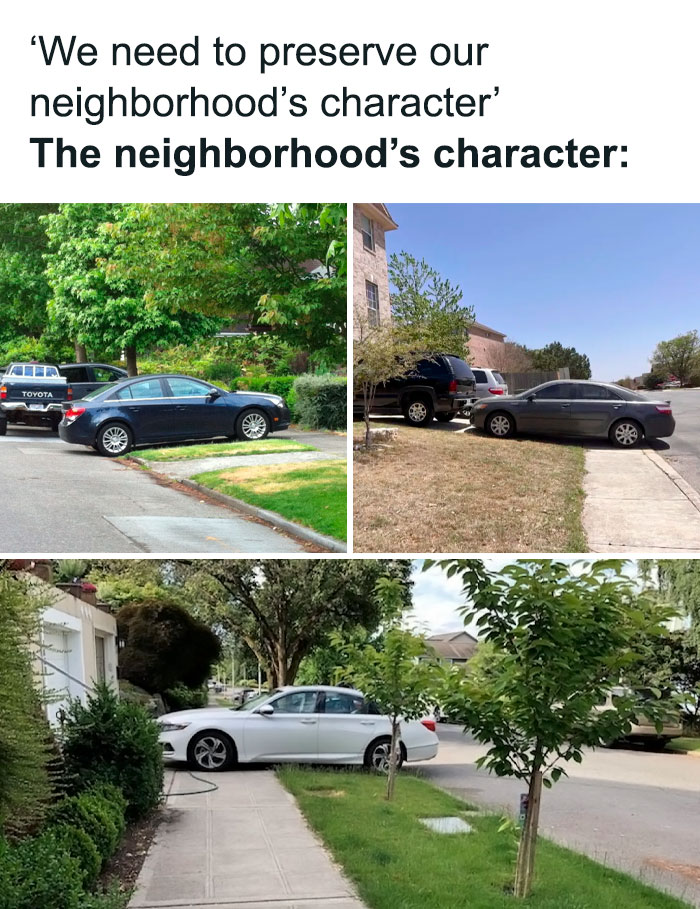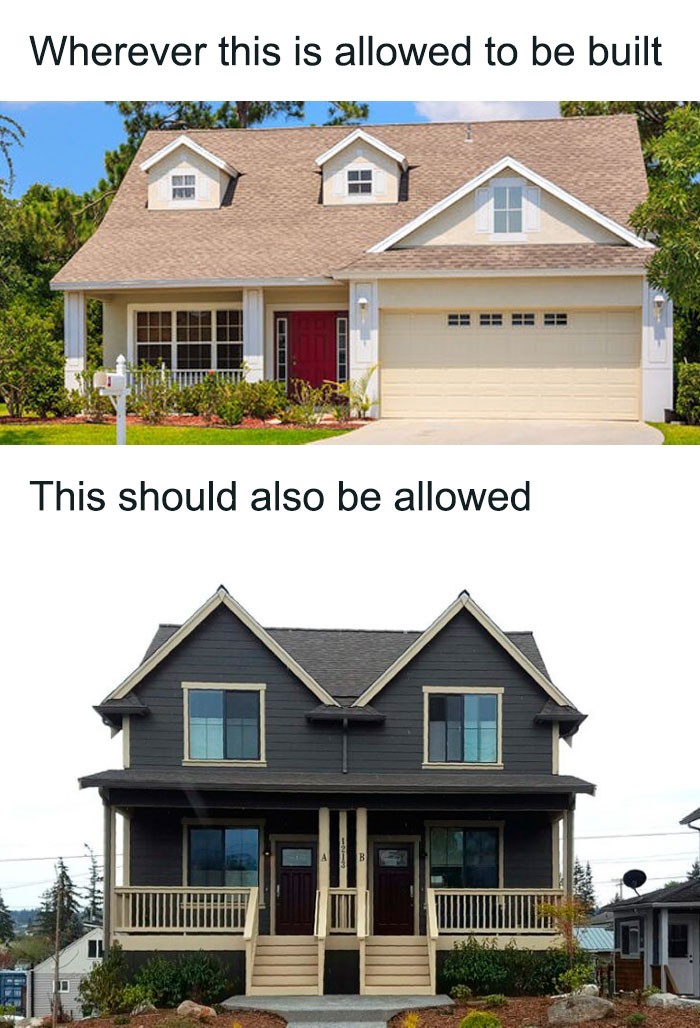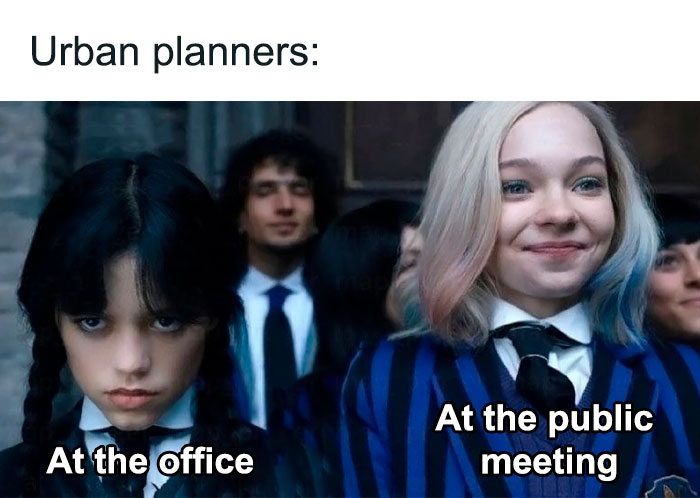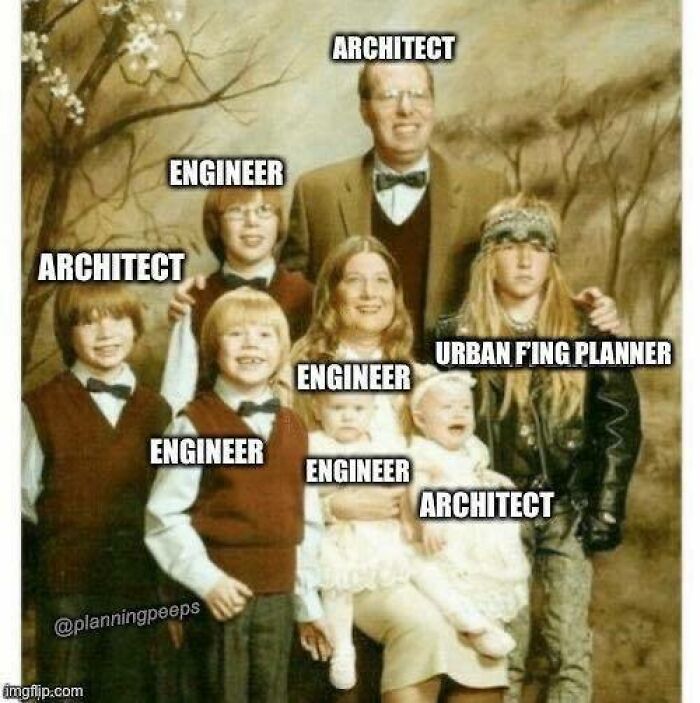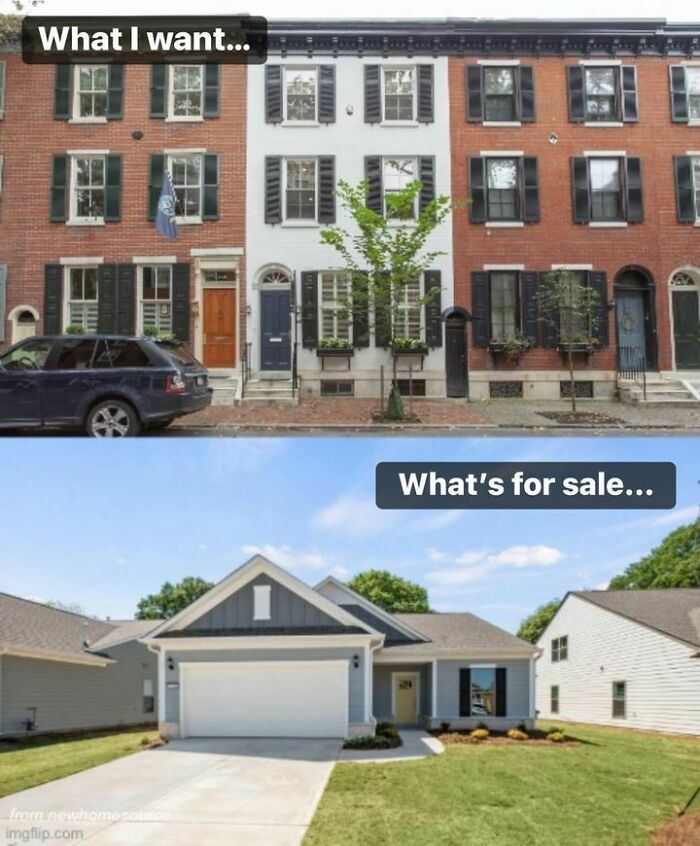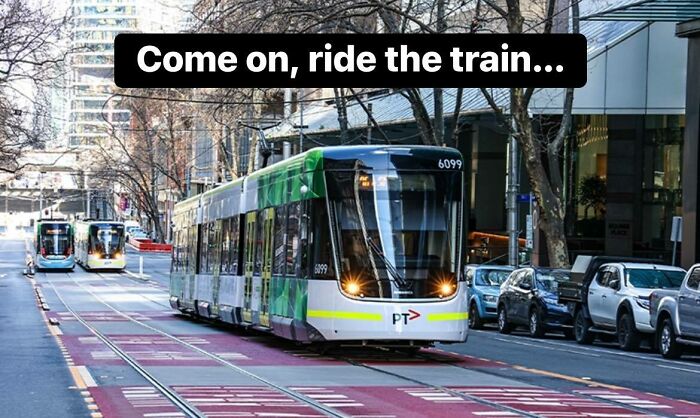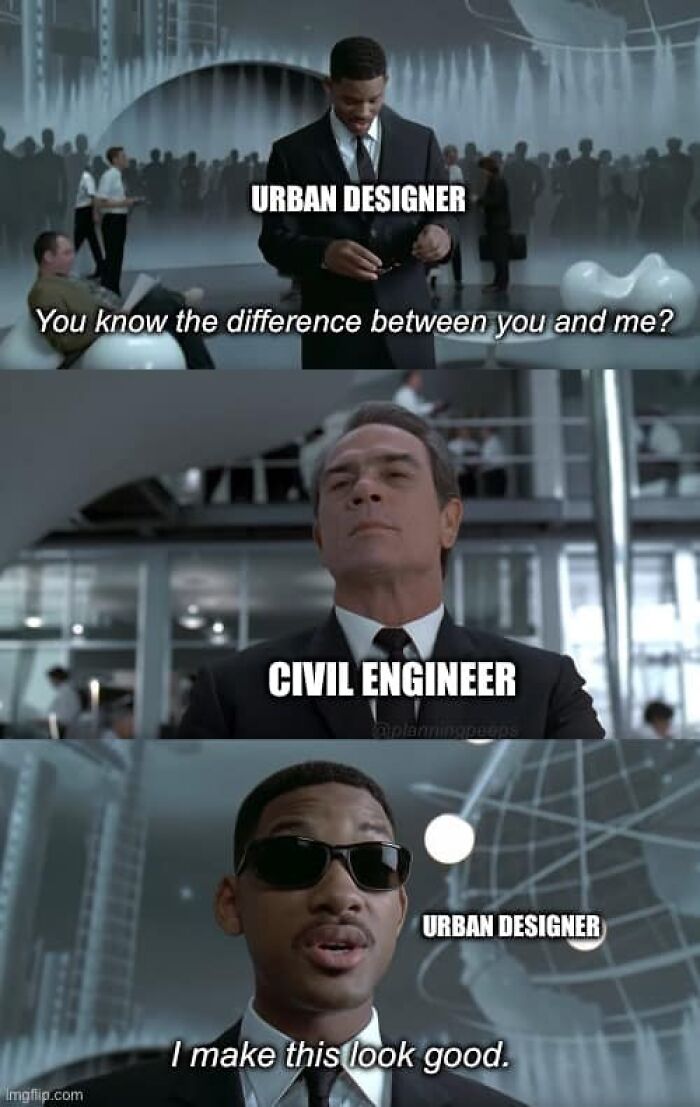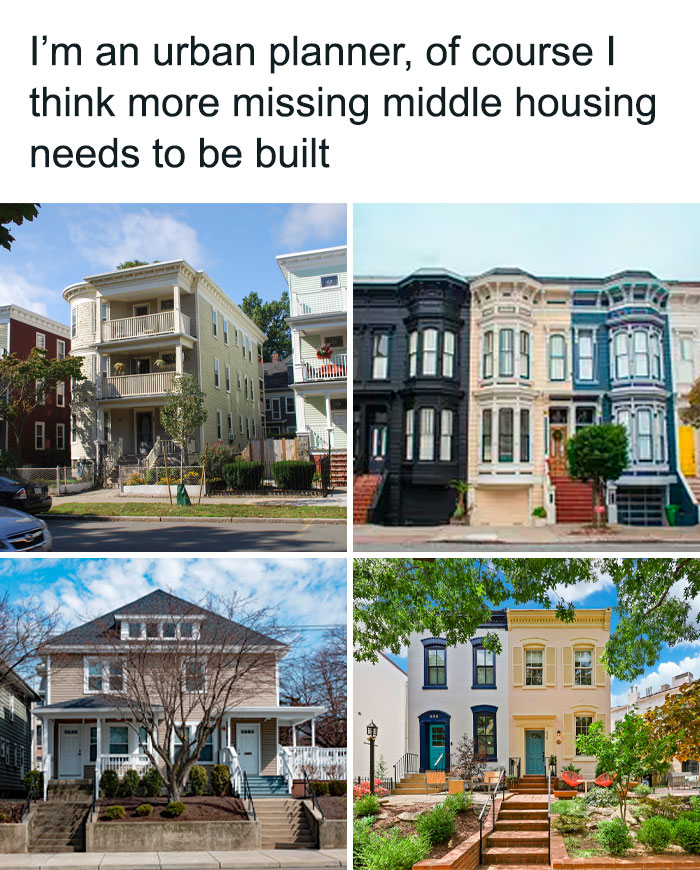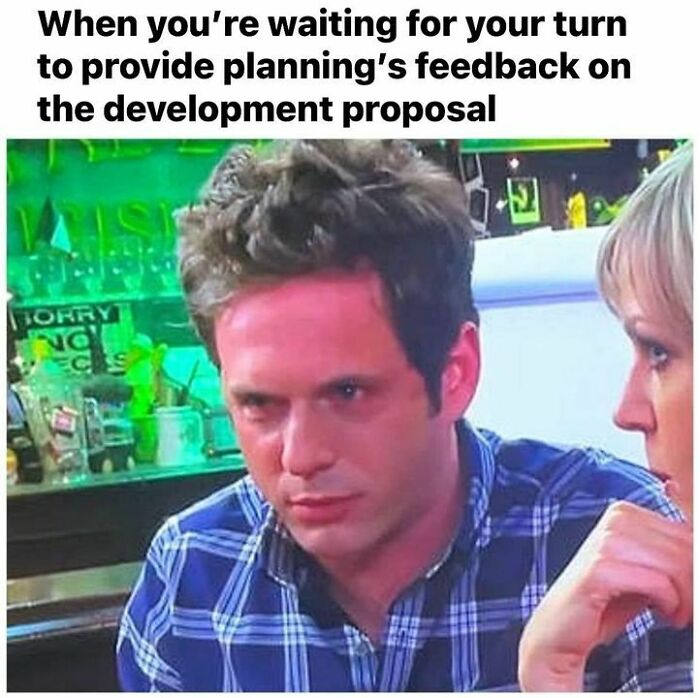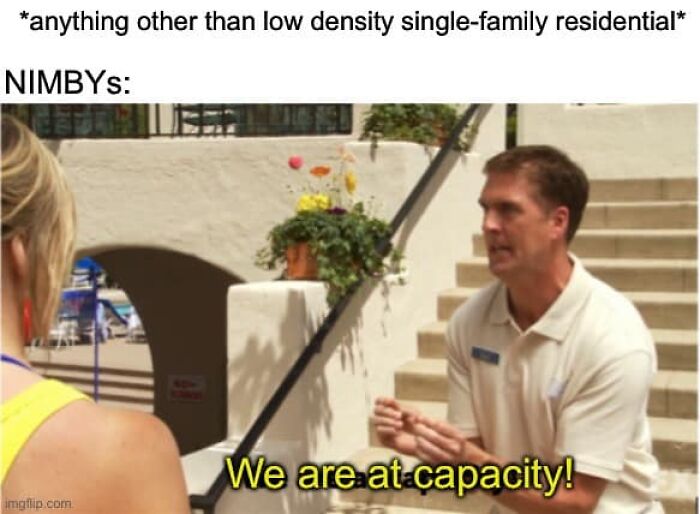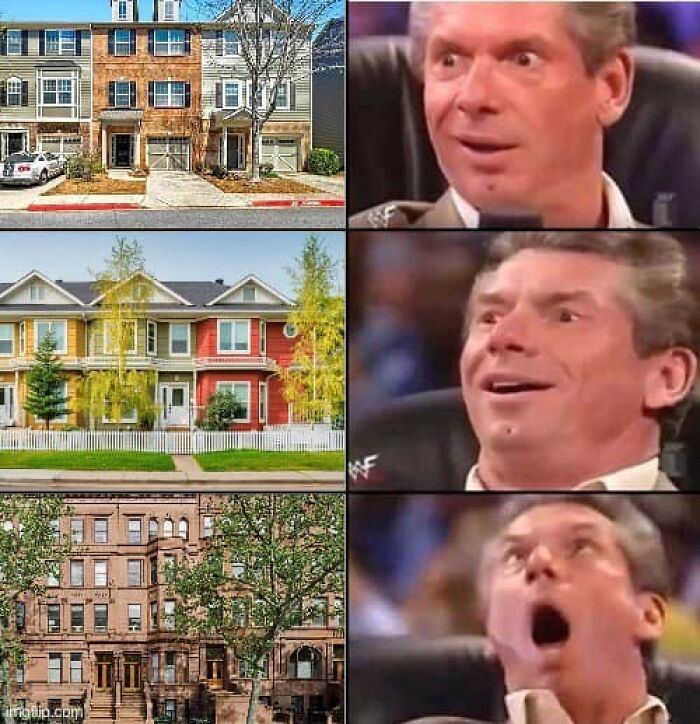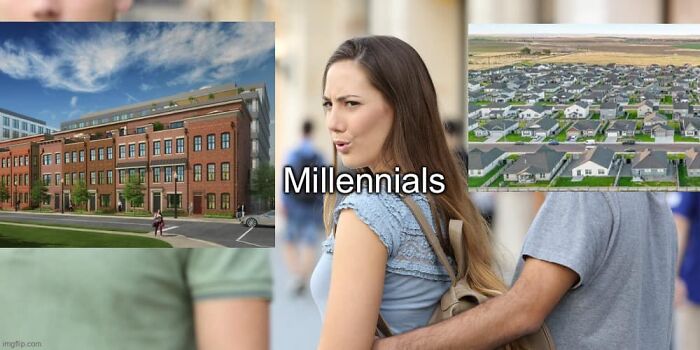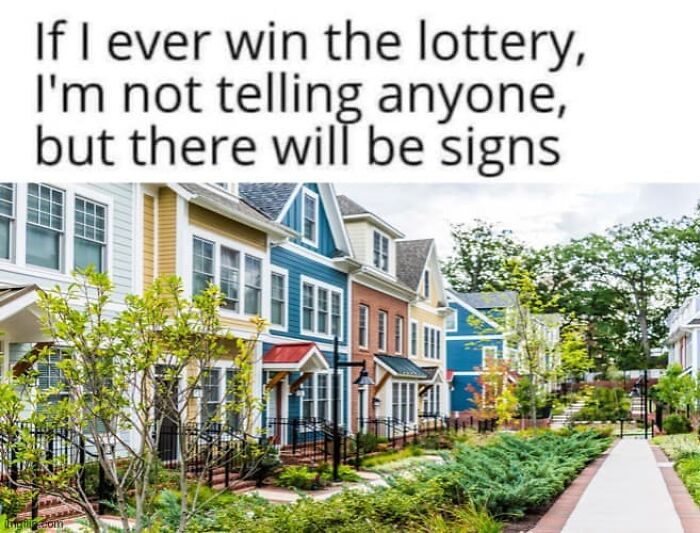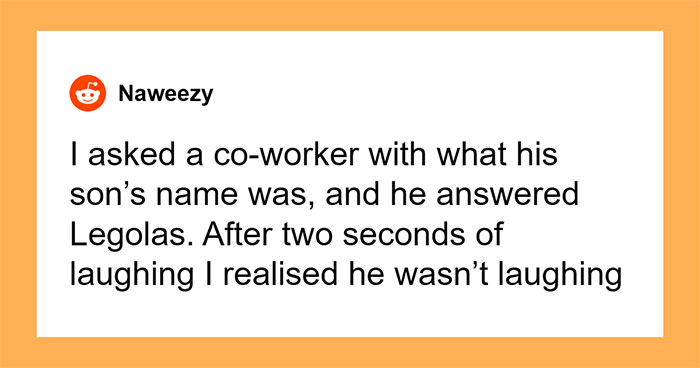
“Classic Urban Planning”: 30 Spot-On Memes That Highlight The Absurdity Of Modern City Planning
Interview With AuthorYou know those memes about ‘the world if x didn’t exist’? That picture of a futuristic-looking city with flying cars, skyscrapers, and green zones. And while it’s an image that probably comes to a lot of us when we think of a ‘future city,’ the ideal cities might have different guiding principles from what we imagine.
At least, that’s what I learned from scrolling through the content of Planning Peeps. It’s a Facebook group for and about the planners of urban spaces. They advocate for better city infrastructure and better urban planning solutions through humor and memes. Thanks to them, I also learned about missing middle housing. Curious to know more? Scroll away, and don’t forget to upvote your favorite picks!
Bored Panda reached out to the creator of the page, and they were kind enough to answer a few questions for our readers. You can find our short chat with them below!
This post may include affiliate links.
"'Planning Peeps' is just one person making original planning memes to introduce planning topics [to] anyone who is interested and provide comedic relief for urban planning professionals and students," the creator of the page tells Bored Panda.
The person behind the page says that they simply wanted to create a community for urban planning professionals and students and the general public alike. "The memes are intended to inform about urban planning topics and to simplify concepts through humor," the admin says. Well, they've been going strong since 2015, so don't hesitate to give them a follow if you like what you see here, Pandas!
The US, Canada, and Australia were built for the CAR, not for humans.
I'll admit, I've played my fair share of SimCity. I honestly used to love it, but there was a common problem that I would run into. When my cities got big, I would just give up because it would become too hard to manage, and I'd go play some Rollercoaster Tycoon instead. I had to worry about the city budget and deal with the constant congestion of the streets and the unhappy Sims – it was just all too much.
Only now, when I Google 'How do I get better at SimCity,' I see that it might've been pretty simple. Starting small, planning ahead, and keeping the citizens happy are just some starting points for creating a decent city. Interestingly, the same principles apply to city planning in real life. After all, it's a simulation game, so isn't it supposed to reflect life?
Increasing order of OP's idiocy here. First is a shortcut with a bona fide desire path. Second is a path for bikes since the stairs have no ramp because it would be too steep, bet there is a road connection ahead. Third is ignoring the curve is required to link to a street junction, and is better to have a curve than a T intersection (prevents sudden braking and makes insertion easier). Fourth, the winding path is necessary to limit the steep gradient and make the path accessible according to ADA regulation.
Wanna get your mind blown? Go to almost any major city in Europe and see school children taking the public transportation to school unsupervised! 🤯
So, let's go back to missing middle housing and how it’s related to making cities better. When looking through the content on 'Planning Peeps,' one might think that the biggest sin in urban planning is the suburbs and their single-family homes. The term 'missing middle housing' belongs to architect Daniel Parolek. He coined it in 2010, describing the types of houses built in 1940s America.
What types in particular? Row houses (also called terraced houses), two-flats that one can see in Chicago, triple-deckers in Boston, and California's bungalow courts. And why are they middle housing?
"Most people consider single-family homes as small-scale housing and apartment buildings as large scale. I'm saying that what's in between those two extremes is 'missing,'" Parolek explained. "It's missing because we haven't built a lot of them in the last 60 to 70 years, partly because of zoning barriers."
For those confused, it's WAY to skinny! Imagine riding a bike in that "lane" and having to pray you don't get smacked in the back of the head by a F-250 side mirror as they pass you doing 55. It needs to be triple the width!
And why are these the superior types of houses? First, they make neighborhoods walkable and more sustainable. When people live and work in walkable communities, they're lifestyles are automatically more environmentally friendly. Small retail also can flourish in these types of cities. Big-box stores are usually clustered in retail parks, which is a characteristic of the American suburb.
For those who are confused, left is the US and right is Europe. There's a reason why we LOVE European cities when we visit and it's because of this!
"Missing middle housing should be part of a compact, walkable neighborhood that has commercial amenities such as restaurants and small businesses," Parolek explained further. "There are huge environmental benefits for this kind of housing, too. We're using less land and reducing greenhouse gas emissions — and we're getting people out of their cars."
The current auto-centric city planning in America also marks the loss of third places. 'Third places,' as the term's creator, sociologist Ray Oldenberg, explained, refer to places for social gathering aside from the two usual social environments: the home and the workplace. The simplest examples are bars, parks, cafes, bookshops, hair salons, and other places where the community comes to hang out.
I briefly worked in our local planning department. It was so sad to see all the young urban planners who dreamed of improving and preserving our community, only to find that permits go to the developers with the most political clout. You want to build multi-family housing with ground level retail opportunities for small businesses? No. You want to build the 15th McDonalds in town in town? Here's your permit....
But why are these third places important? Experts say that they're essential to our mental health and wellbeing. Researcher Dr. T. Panova claims that these places should be a matter of public health. "While work and home impose roles and responsibilities on us, like tasks we must do, relationships we need to manage, and stressors we have to handle, the third place is somewhere we can go to unwind without being expected to engage in any specific behavior."
Experts also say that there's a growing shortage of such third spaces. Just think about the most popular sitcoms of the '90s, Friends and Seinfeld. The characters used to gather in a cafe or a diner just to hang out, not work on their laptops. As Eliza Relman writes for Business Insider, work in the most popular TV shows in the past years – Succession, Superstore, Severance – is all-consuming. Life beyond the workplace is just an afterthought.
I was able to remove the drywall covering the 100 year old brick chimney behind and it is now THE center piece of my living room!
One might argue that the Internet is a place. Can't it operate as a third space as well? Well, as Dr. Alex Danvers told Bored Panda in a previous interview: "Being around people for longer is related to being more satisfied with your life." He says that real-life socializing might be more demanding, but it is more rewarding at the same time. "I'd think of online socializing as sort of the 'lite' version," Danvers said.
"That may be nice to do when you're feeling tired or burnt out, but it's also not going to give you the full experience of connecting with another person. To have really satisfying connections, you do need to put in the effort of navigating the more complicated world of in-person interactions."
The idea is good BUT... electric cars to currently too expensive for the general public to switch to, or not always possible. Perhaps in the future if all cars switch over to an electric model
So, how does it all come back to city planning? When and why did we lose our third places? Experts point to the beginning of the 20th century. The suburbs flourished, and the highways started running through neighborhoods. Public transport, walking, or biking became unpopular, and so, bike lanes, sidewalks, and good public transport systems became obsolete.
As city planner Paul Stout explained in a TikTok, "American cities were basically hollowed out throughout the '70s, and any semblance of walkability or public transit was quickly lost."
lol #2 is just a bit better than #1 (thanks to the blue sky effect and added saturation) but still s****y as f**k. The density is way too high, there is not a single park in sight (no, painting green on your design doesn’t count), you absolutely don’t need skyscrapers (except maybe just a few as landmarks) or any building more than 8-10 stories high. That’s a terrible example.
That's a whole lot of doom and gloom, you might think. But don't worry, there are efforts to bring walkable cities back. 79% of Americans say that being able to walk to places in their neighborhood is an important factor when choosing a home. And some companies are trying to bring walkable neighborhoods back. Maybe it's not so far off in the future that the people will get what they want.
Buuuuuuut guuuuuuys! I am sure if we add the 10th lane it will solve our traffic problem! come ooooonnn guys!
If it's single skin brick, then the plaster helps with insulation (and thus the envioronment) Sometimes, there is method in their madness.
I live near Ellicott City, Maryland, in the usa. Ellicott City was named a historical area, but in recent years has had a couple of majorly destructive floods, because it was down hill from major developments that destroyed any permeable land area which could soak up the water before it floods down the river. Building a lot of developments uphill and screwing the people down below. Aaahhhh, bring in more tax-paying entities, to hell with "unintended consequenses"
The problem with the UK is that there are areas where the houses were built before cars were a thing. In those areas parking is horrendous and parking up onto the pavements is quite common place
Mixed use works best when the whole block isn't owned by a single megacorp though.
As long as you stop for the folks coming around before you pull out yourself, I don't see the problem. Of course, I'm from the US, where no one knows how to use roundabouts.
Nah, I prefer to not be dependent on other people to get to places on time.
Packing people is as close as possible and removing side windows seems to be a theme in this thread.
It seems like the author is suggesting (over and over) that we'd all be better off if we couldn't find a place to park.
Don't get me started. I'm just really really glad that Mr Auntriarch is an engineering geologist and decided against the house in Tewkesbury
As a colorblind guy, I strongly agree with the obvious choice, as well as #s 2 and 3.
Depend on the depth of the building. The second one has no side windows, so it has to be at maximum 2-rooms deep to meet lighting and air circulation requirements. The former, often called "shotgun house" allows for more rooms, larger surface and better lighting/venting. This type of house were common in the 1800s because it created natural airflow in all the rooms, improving cooling and removing humidity, while being able to house larger families. Many social housing projects (company and railroad housing, or model communities) used this kind of layout because at the time was seen as a solution for common health issues.
Americans just can't comprehend how we've been brainwashed to hate this idea...
For living in the city, I understand. But who in their right mind wants to live in a split level/duplex/ apartment over a single family home? Especially in the suburbs or country. I would rather live in a van than an apartment.
For living in the city, I understand. But who in their right mind wants to live in a split level/duplex/ apartment over a single family home? Especially in the suburbs or country. I would rather live in a van than an apartment.

 Dark Mode
Dark Mode 

 No fees, cancel anytime
No fees, cancel anytime 











